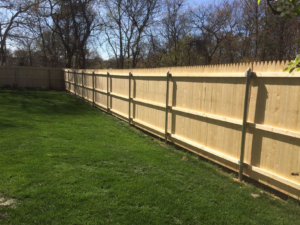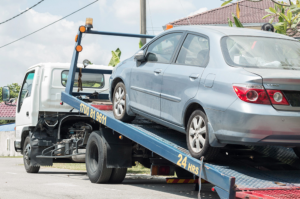A fence is a person who buys and sells stolen goods. Thieves often sell their stolen goods to fences, as this reduces the risk of police detection. Fences may also disassemble stolen items and transport them to different cities to avoid attracting attention.
Fences are a vital part of property ownership. Laws require landowners to fence in their property lines. Contact Charlotte Fence Company now!

Privacy is an aspect of autonomy essential for healthy interpersonal relationships. Without privacy, forming close and trusting relationships with others is difficult, and it inhibits personal growth. Privacy is also important for a society to function effectively, as it protects people’s security and dignity. The lack of privacy is often a source of great frustration and anxiety.
A fence is a barrier that separates two areas of land, preventing visual contact with the other side. It can be made of wood or wire supported by posts, and it can be either opaque or permeable. Fences are used to prevent animals from crossing over into unowned or private areas, and they can also serve as a boundary marker for property lines. Fences are also commonly used in show jumping and horse racing to mark boundaries and provide obstacles for horses to jump over.
In his seminal article on privacy over one hundred years ago, Brandeis argued that the mass media’s exposure of private matters to public curiosity undermined the values of virtuous men and replaced them with “the shabby, base, trivial and irrational.” While governments need sensitive information to govern, citizens should have protection from their government’s overzealous collection and dissemination of their information.
Security
The primary reason that homeowners fence their properties is for enhanced security. They want to keep trespassers and burglars out of their backyard, and having a sturdy fence is an effective deterrent. The presence of a fence can also provide a sense of safety for families with children and pets. A fence can protect them from getting run over by cars, or being accidentally bitten by wild animals. In addition to the privacy and security that a fence provides, it can increase a property’s value. Fences that include security features such as gates and locks are a highly attractive feature for potential homebuyers.
In the underworld of early China, fences were a key element in criminal networks. They sold stolen goods that were collected from bandits or gang members, or bought from harborers (people who provided safe houses for thieves). Unlike the more common male receivers who worked as fences, female fences were often Governesses who used social cunning rather than their physical strength to make money.
To prevent law enforcement from catching them, a fence would hide the original identity of stolen goods and replace or alter serial numbers on items. They would also transport the goods to another city where they could sell them without attracting attention from police. The prices that a fence paid for the goods they sold depended on both norms and legitimate market rates, as well as the category of the items stolen.
In addition to reducing the risk of criminal activity, fencing can reduce energy costs by acting as a windbreak and retaining warm air in an enclosed area. In the long-term, this can save on heating bills and reduce carbon emissions from traditional heating systems. Fences can also enhance a property’s curb appeal and add beauty to an outdoor space. In the case of a wood fence, regular maintenance is required to ensure that it lasts and remains in good condition.
A fenced yard can be a great way to relax, entertain guests and spend time with family. Depending on the type of fence, it can also provide additional benefits such as security and usability. If you are planning to sell your property in the future, communicating these advantages in listing descriptions and during showings can boost your property’s value.
Aesthetics
The aesthetic experience elicits broad emotional responses such as awe, wonder and admiration. It can be triggered by many things including music, poetry, and beautiful landscapes as well as social events like weddings, funerals, and graduations. Aesthetics also encompasses the enjoyment of clothes, jewelry, food, physical attractiveness, and even the design of homes and buildings.
According to some, the experience of aesthetic enjoyment requires a certain level of sensibility that must be cultivated and refined. This sensibility is thought to be a necessary prerequisite for understanding art. Moreover, aesthetic appreciation is also considered to be an important form of self-expression. This is because it contributes to the growth and development of one’s sensuous, emotional, and imaginative capabilities.
Other scholars, however, argue that a more inclusive definition of aesthetics should take into account everyday objects and activities that do not fit the traditional mold of art. In addition, the inclusion of moral implications of objects and experiences into the aesthetic realm would help to reframe the way we perceive and value them (Rautio 2009; Saito 2017a).
Some of the most basic aesthetic qualities include beauty, sublimity, elegance, grace, artistic excellence, and powerful expression. Unlike utilitarian pleasure, aesthetic joy comes from the experience of an object or event that is purely for its own sake and has no functional purpose. Other important aesthetic qualities include expertise or virtuosity, which refers to the ability to perform or produce an activity with skill and precision.
The aesthetic experience is unique in that it does not involve any action or reaction, but rather evokes a feeling of awe and wonder. It allows us to escape from our daily concerns and to feel a sense of transcendence. It also helps to improve our mood by enhancing memory, lowering stress levels, and increasing feelings of happiness and contentment.
Aesthetics plays a big role in our lives, from the colors of our walls to the types of furniture we choose. In fact, our emotions are influenced by our surroundings, and studies show that different color schemes have the power to affect our moods. This is why it’s important to make sure your home or office is decorated with calming colors and soft lighting.

